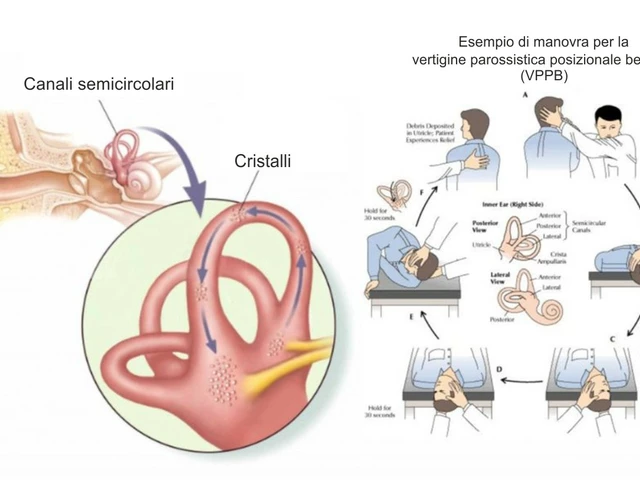
The Connection Between Bursitis and Stress: How to Manage Both
Understanding Bursitis: What is it and How is it Connected to Stress?
Bursitis is a painful condition that affects the small, fluid-filled sacs called bursae that cushion the bones, tendons, and muscles near your joints. When these sacs become inflamed, it can cause pain, swelling, and limited range of motion in the affected joint. Bursitis can be caused by repetitive motions, prolonged pressure on a joint, or even an injury.
The connection between bursitis and stress lies in the fact that stress can lead to muscle tension and a lack of self-care, which can exacerbate the symptoms of bursitis. Additionally, the chronic pain associated with bursitis can be a significant source of stress in itself, creating a vicious cycle that may worsen both conditions.
Identifying the Warning Signs of Bursitis and Stress
It is essential to recognize the warning signs of both bursitis and stress to manage both effectively. The primary symptom of bursitis is pain in the affected joint, which can worsen with movement or pressure. Other signs of bursitis may include swelling, redness, and stiffness in the joint.
Stress, on the other hand, can manifest itself in various ways, including physical symptoms such as headaches, muscle tension, and sleep disturbances. Emotional symptoms may include feelings of irritability, anxiety, and depression. By identifying these warning signs early, you can take steps to address both bursitis and stress and minimize their impact on your life.
Effective Strategies for Managing Bursitis
Managing bursitis typically involves a combination of medical treatments and self-care measures. Your healthcare provider may recommend over-the-counter pain relievers, such as ibuprofen or naproxen, to help reduce inflammation and alleviate pain. In more severe cases, your provider may suggest corticosteroid injections or even surgery.
Self-care measures for bursitis include rest, ice, and elevation of the affected joint. Additionally, gentle stretching and strengthening exercises can help improve joint mobility and reduce the risk of future flare-ups. Be sure to consult with your healthcare provider before beginning any new exercise program, especially if you have bursitis.
Proven Techniques for Reducing Stress
There are numerous techniques available for managing stress, and finding the ones that work best for you may require some trial and error. Some proven stress-reduction techniques include deep breathing exercises, progressive muscle relaxation, and mindfulness meditation. Engaging in enjoyable hobbies, spending time with loved ones, and maintaining a healthy work-life balance can also help alleviate stress.
Another essential aspect of stress management is self-care. This includes getting sufficient sleep, eating a balanced diet, and engaging in regular physical activity. Taking care of your physical health can have a positive impact on your mental well-being and help you better manage stress.
Combining Bursitis Management and Stress Reduction
Managing bursitis and stress together involves integrating the strategies mentioned above into a comprehensive treatment plan. By addressing both conditions simultaneously, you can maximize your chances of successful recovery and long-term pain relief.
For example, incorporating gentle exercise and stretching into your daily routine can help manage bursitis symptoms while also providing stress relief. Similarly, practicing good self-care can help reduce stress and minimize the risk of bursitis flare-ups. Don't hesitate to seek professional help from a healthcare provider, mental health professional, or physical therapist if you need additional support.
Seeking Support from Friends, Family, and Healthcare Professionals
Managing both bursitis and stress can be challenging, and it's essential to seek support from those around you. Friends and family members can provide emotional support, encouragement, and practical assistance as you work to manage your symptoms.
Healthcare professionals, such as doctors, physical therapists, and mental health providers, can also offer valuable guidance and resources for managing bursitis and stress. Don't be afraid to reach out and ask for help when you need it.
Maintaining a Positive Attitude and Focusing on the Future
Finally, it's crucial to maintain a positive attitude as you work to manage both bursitis and stress. While it can be challenging to remain optimistic in the face of chronic pain and stress, focusing on the future and the possibility of improved health can help keep you motivated.
Remember that progress may be slow, and setbacks may occur along the way. However, by staying committed to your treatment plan and prioritizing self-care, you can significantly improve your quality of life and effectively manage both bursitis and stress.





Written by Jakob Fitzroy
My name is Jakob Fitzroy, and I am an expert in pharmaceuticals with a passion for writing. I have dedicated my life to studying medication and understanding how it affects various diseases. My goal is to educate people about the importance of proper drug therapy and prevention methods. I have authored numerous articles, providing valuable insights on medication, its development, and its impact on patients. My driving force is to contribute to the ongoing fight against diseases and improve the overall health and well-being of people around the world.
All posts: Jakob Fitzroy